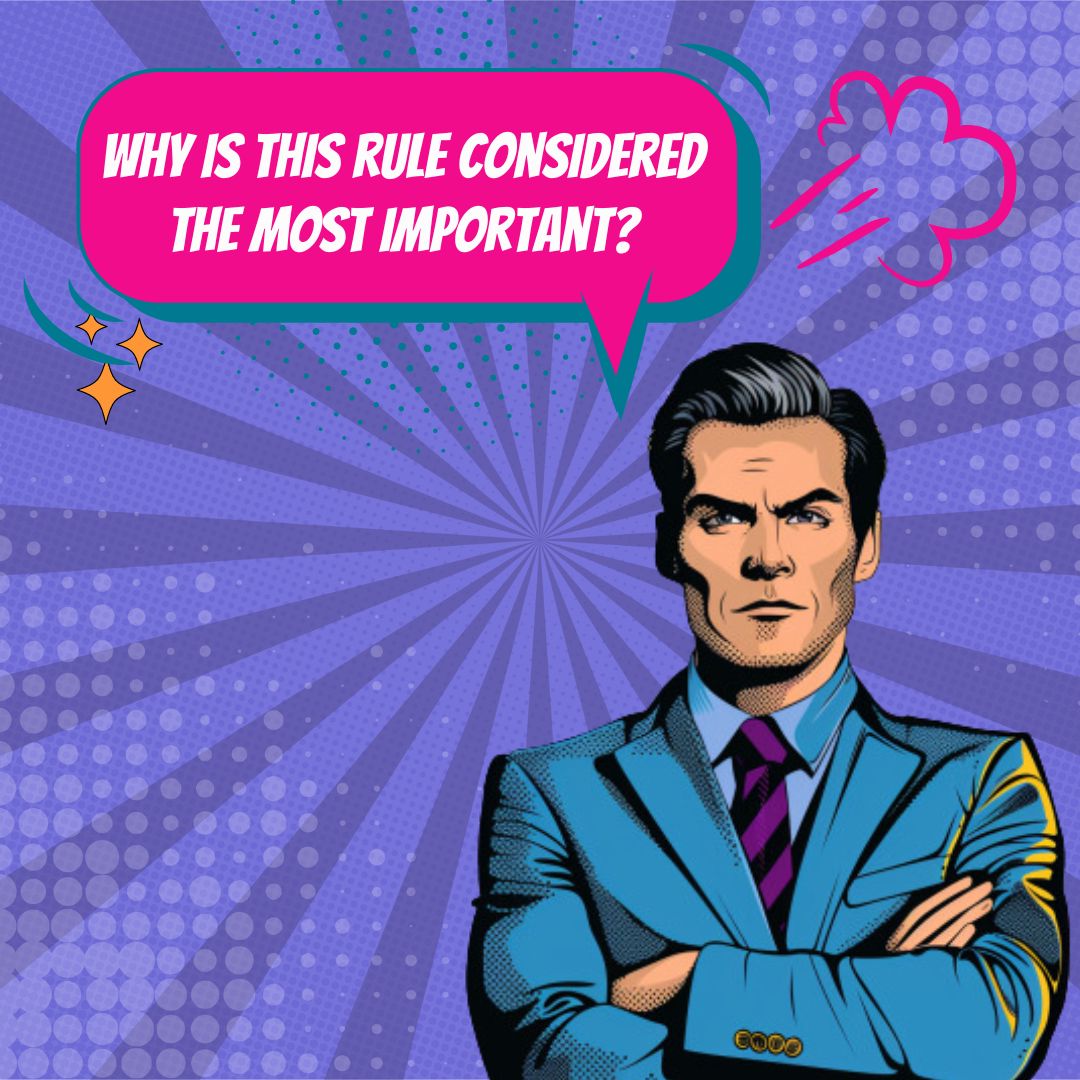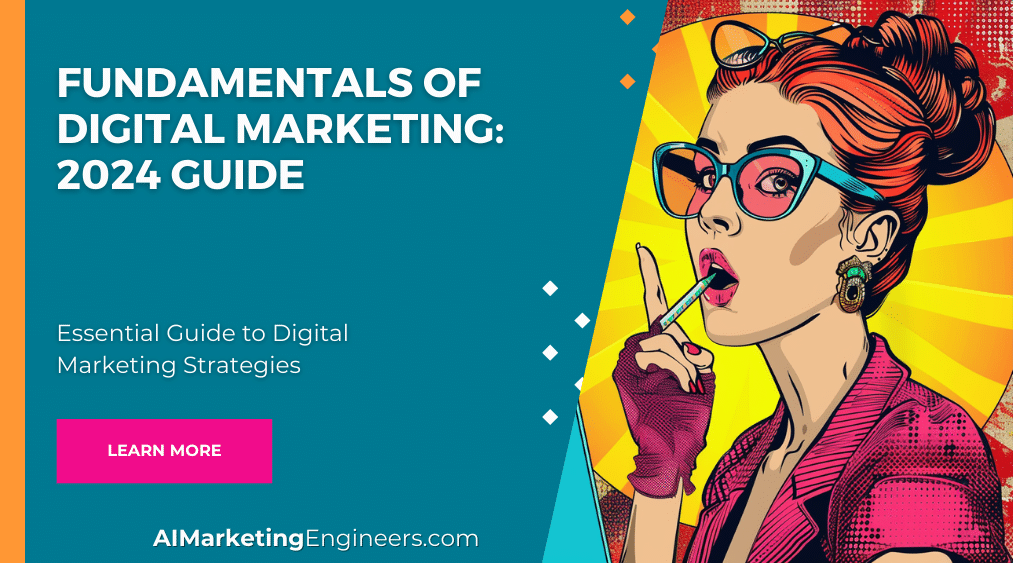Key Takeaways
✅ Know Your Audience: An astounding 76% of consumers expect companies to understand their needs and expectations. Craft your campaigns with precision by gathering data through surveys, focus groups, and analytics. Distill these insights into robust buyer personas that steer your content and offers for maximum relevance and engagement.
✅ Focus on Building Relationships: With a customer retention rate increase of just 5% potentially boosting profits by 25% to 95%, connection is key. Nurture your brand community with consistent multi-channel communication, educational resources, and responsive service that transforms customer satisfaction into unwavering loyalty.
✅ Consistency Matters: Brand consistency can increase revenue by up to 23%. Cement your presence in the customer's mind with a uniform brand voice and aesthetic. Regularly refine your marketing outputs to ensure alignment with your core values - ensuring your brand not only speaks but resonates with your audience's evolving expectations.

Introduction
Are you prepared to delve into the heart of successful marketing and pique the interest of an audience that is bombarded with endless promotional messages each day? To truly stand out, one must not just understand the #1 rule in marketing – but master it. It's the linchpin that ensures a brand’s message not only reaches the intended ears but also prompts action, fostering both immediate results and durable growth.
In this article, we'll unveil the steadfast principle that transcends trends and survives the test of time. Customer-centricity – a term that might seem straightforward yet demands a deep dive to explore its profound implications. We'll guide you through the nuances of building invaluable customer relationships, personalizing experiences, and measuring satisfaction – all to maximize revenue, return on ad spend (ROAS), and overall return on investment (ROI). Prepare for a tour de force of expert insights and state-of-the-art strategies that promise to elevate your marketing playbook and drive unstoppable growth.
Top Statistics
| Statistic | Insight |
|---|---|
| 71% of consumers expect personalized interactions from brands. (Forbes, 2021) | The expectation for personalization is a key reminder that marketers must deeply understand their audience to craft personalized experiences that resonate and drive engagement. |
| 64% of marketers cite generating traffic and leads as their top challenge. (HubSpot) | This statistic underscores the critical importance of precisely identifying and reaching your target audience, which remains the driving force behind successful traffic generation and lead conversion. |
| Digital ad spending is set to surpass traditional media, reaching $191 billion worldwide in 2021. (eMarketer) | This paradigm shift accentuates the ongoing digital transformation, highlighting the immense opportunities for businesses that harness online platforms for targeted advertising. |
| Over 4.2 billion active social media users globally as of January 2021. (Statista) | Social media's expansive reach offers a fertile ground for marketers to connect and engage with audiences, emphasizing the value of a tailored social media strategy. |
| 84% of people have been convinced to buy a product or service by watching a brand's video. (Wyzowl) | Video content's compelling influence on purchase decisions showcases the power of dynamic and interactive media in modern marketing efforts. |
Understanding the #1 Rule: Customer-Centricity
Customer-centricity is the golden thread that weaves through every successful marketing strategy. At its core, it’s the practice of placing your customer at the center of your marketing universe, tailoring experiences and value propositions directly to their needs and desires. Brands like Amazon and Zappos have skyrocketed to success by adopting this mindset, transforming one-time buyers into lifelong advocates through relentless focus on customer satisfaction.
Putting the Customer First
A deep comprehension of customer needs, preferences, and behaviors is pivotal in curating marketing efforts that resonate. To capture these insights, savvy e-tailers deploy a variety of data-gathering techniques. Surveys unveil direct consumer feedback, focus groups illuminate nuanced preferences, while social listening taps into the candid social media chatter, ensuring a panoramic view of customer sentiment.
Personalization and Customization
Personalization takes customer-centricity from philosophy to practice. By leveraging data and technology, brands can craft individualized experiences that significantly uplift the customer journey. Tactics abound, from targeted email campaigns that speak to the recipient’s unique interests to smart, tailored recommendations on e-commerce platforms, each designed to articulate, "We know you, we value you."
Building Strong Customer Relationships
The bonding agent of long-term success in marketing is customer loyalty and retention. Strong customer relationships are fostered through consistently stellar customer service, genuine transparency, and active community engagement. These elements work in tandem to create a trusting and engaged customer base, propelling word-of-mouth marketing and reducing churn.

Measuring Customer Satisfaction and Loyalty
To keep a finger on the pulse of customer-centric initiatives, it’s critical to monitor metrics such as the Net Promoter Score (NPS) and Customer Lifetime Value (CLV). These figures are more than mere numbers; they are diagnostic tools that highlight areas for improvement and strategy adjustment, directly informing how a brand evolves in its pursuit of excellence.
The most resounding rule in marketing is the unwavering focus on customer-centricity. This philosophy is not a static one, but a dynamic principle that evolves in tandem with your customer base. Marketers are thus encouraged to passionately pursue customer satisfaction and loyalty, ensuring that every strategy, campaign, and innovation is feasibly tailored to the desires and needs of the customer.
Inspirational Quotes
1. "Know your customer" - Peter Drucker, Management Consultant and Author
Peter Drucker, the beacon in management consulting, advocates for the deep knowledge of one's customer base. Mastery of customer insights serves as the fulcrum of marketing strategy, enhancing the relevancy and impact of your outreach. Drucker's conviction is a clear call to arms for ingraining customer research and tailored engagements in your marketing blueprints.
2. "Marketing is no longer about the stuff that you make, but about the stories you tell" - Seth Godin, Author and Entrepreneur
Innovation evangelist Seth Godin articulates the transformative role of narrative in marketing. As an originator of ideas, Godin's insight is seemingly simple, but profound – storytelling is the pulse of effective marketing. This quote inspires to weave narratives that breathe life into brands, making consumer connections that transcend the product itself.
3. "The best marketing doesn't feel like marketing" - Tom Fishburne, Founder & CEO of Marketoonist
Through the eyes of Tom Fishburne, marketing transcends self-promotion, embedding itself in the genuine and organic experiences of the consumer. This perspective rings particularly true in an age where audiences are bombarded with marketing on all flanks. Fishburne fosters a philosophy where marketing is a service, an addition to the consumers’ world, not an interruption.

AI Marketing Engineers Recommendation
Recommendation 1: Know Your Audience: The all-encompassing #1 rule in marketing is to understand your target audience profoundly. Utilize advanced analytics and data-mining tools to gather in-depth data about consumer behavior, preferences, and pain points. For instance, recent statistics reveal that personalization can boost sales by 10-15%. Leverage this data to craft highly targeted marketing campaigns, customizing your messaging to speak directly to each segment's interests and needs. With data showing that 80% of consumers are more likely to purchase from a brand that provides personalized experiences, it's evident the intimate knowledge of your audience can set you apart.
Recommendation 2: Create Value: In today’s competitive marketplace, the brands that stand out are those that pivot from selling products to selling experiences and solutions. Align your marketing strategies with this trend by illustrating how your product or service adds value or solves a specific problem. Ensure that every piece of content, from blog posts to advertisements, communicates this value proposition unequivocally. In doing so, aim to educate and engage your audience, rather than just sell to them. As per a Service Management Group survey, customer loyalty increases by 62% when brands engage customers with informative content, underscoring the power of value creation.
Recommendation 3: Leverage AI-powered Tools for Personalization: Equip your business with leading-edge technology to stay ahead in the e-commerce arena. Implement tools like AI-driven chatbots for enhanced customer engagement, and utilize machine learning algorithms for personalized product recommendations. AI technology not only helps in understanding consumer trends but also predicts future behaviors, making your marketing initiatives smarter. Adapting these sophisticated tools can escalate revenues significantly – businesses using AI for sales and marketing efforts have witnessed over a 50% boost in leads and a reduction in call time by 60-70%. Thus, employing AI allows for superior personalization and efficiency, which are vital in today's fast-paced e-commerce landscape.

Conclusion
In the odyssey to demystify the #1 rule in marketing, we have unequivocally zeroed in on customer-centricity as the lodestar guiding every successful strategy. With the advent of data-driven insights and innovative technologies, putting the customer at the forefront is not just a passing trend, but a long-enduring ethos of the marketing domain. The success stories of customer-centric brands are testaments to the transformative power of this principle.
Recognizing that the heart of all marketing efforts is a thorough comprehension of customer needs, preferences, and behaviors, we must not only remain vigilant learners but also agile executors. Harnessing the potency of personalization can pivot a standard campaign into an unparalleled brand experience, fostering an unshakeable customer loyalty. It's worth underscoring: brands that personalize, thrive.
Yet, it's not solely about attracting customers—building and maintaining strong relationships is paramount. Practices that engage customers, uphold transparency, and deliver exceptional service lay the foundation of indomitable brand affinity. These tenets, my fellow marketers, are the bricks and mortar of the commerce empires of tomorrow.
Finally, let's not underestimate the prowess of metrics like Net Promoter Score (NPS) and Customer Lifetime Value (CLV) in our quests. Measuring customer satisfaction and loyalty offers the compass by which we can navigate and fine-tune our marketing ventures.

FAQs
Question 1: What is considered the #1 rule in marketing?
Answer: The fundamental principle often referred to as the #1 rule in marketing is "know your audience." Understanding your target customers' needs, preferences, behaviors, and pain points allows you to create more effective messaging, develop better products, and tailor strategic decisions to meet their expectations.
Question 2: Why is knowing your audience important in marketing?
Answer: Knowing your audience helps you establish an emotional connection with them by speaking directly to their desires, fears, and aspirations. This understanding enables personalized communication, improves customer experience, enhances brand loyalty, and ultimately drives sales and revenue growth.
Question 3: How can I identify my target audience for marketing purposes?
Answer: To identify your target audience, analyze demographic data (age, gender, location), psychographics (interests, values, lifestyle), behavioral patterns (purchase history, online activity), and customer feedback. Use market research tools, social media insights, and customer relationship management (CRM) software to gather and analyze this information.
Question 4: What are some advanced strategies for understanding my audience in marketing?
Answer: Advanced strategies include customer segmentation, creating buyer personas, conducting customer surveys, and leveraging AI-powered analytics tools. These methods help you gain a deeper understanding of your audience's needs, preferences, and behaviors, enabling more effective and personalized marketing campaigns.
Question 5: How can I use social media to understand my audience better?
Answer: Social media platforms provide valuable insights into your audience's interests, behaviors, and preferences. Monitor social media conversations, engage with your followers, use social listening tools, and analyze social media metrics to understand your audience better and tailor your marketing strategies accordingly.
Question 6: What practical advice can I follow to implement the #1 rule in marketing?
Answer: To implement the #1 rule in marketing, start by conducting thorough market research, creating detailed buyer personas, and continuously monitoring your audience's feedback and behaviors. Use this information to tailor your messaging, product offerings, and marketing strategies to meet your audience's needs and preferences.
Question 7: How does understanding my audience impact my overall marketing strategy?
Answer: Understanding your audience is crucial for developing a successful marketing strategy. It enables you to create more effective messaging, develop better products, and tailor your strategic decisions to meet your audience's expectations. This, in turn, leads to improved customer experience, increased brand loyalty, and better overall business performance.

Academic References
- Kotler, P., & Keller, K. L. (2017). Marketing management (15th ed.). Pearson Education. This seminal text contends that the fulcrum of any effective marketing strategy lies in the deep understanding of customer needs, establishing this insight as the golden rule in marketing practice.
- Bailyn, E. (2019). The 4 Ps of modern marketing: A practical guidebook. Morgan James Publishing. Bailyn analyzes the evolution of the traditional marketing mix, proposing a modernized version that places customer experience at the heart—ultimately supporting the axiom that customer-focus is the linchpin of marketing efficacy.
- Porter, M. E. (1980). Competitive strategy: Techniques for analyzing industries and competitors. New York: The Free Press. Porter’s foundational work introduces strategic frameworks that consider customer needs as a core aspect in carving out a competitive edge, cementing the customer-first principle in strategic planning.
- Cialdini, R. B. (2006). Influence: The psychology of persuasion (Rev. ed.). New York: HarperCollins. Cialdini's exploration of persuasion principles such as reciprocity and social proof can be robust tools for a deepened understanding of consumers, underlining the necessity of a customer-centric approach in marketing.
- Levitt, T. (1986). The marketing imagination. New York: Free Press. Levitt posits that the essence of marketing is recognizing and meeting customer needs, reaffirming that successful marketing orbits around the customer-centric universe.
- Kim, W. C., & Mauborgne, R. (2005). Blue ocean strategy: How to create uncontested market space and make the competition irrelevant. Harvard Business Press. By underscoring the significance of uncovering and providing for unmet customer needs, Kim and Mauborgne's concepts align perfectly with the dictum that value creation for the customer is the paramount rule of marketing.
- Ries, E. (2011). The lean startup: How today's entrepreneurs use continuous innovation to create radically successful businesses. Crown Business. Ries emphasizes a lean and adaptable approach to product development, stressing the importance of customer feedback and reinforcing the mantra that customer-centricity is integral to marketing success.







